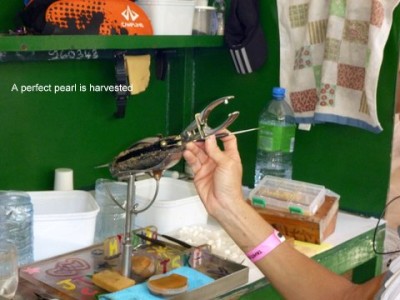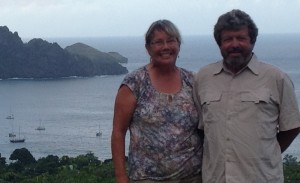Mazu Adventures
| Vessel Name: | Mazu |
| Vessel Make/Model: | Outbound 46 |
| Hailing Port: | Rainer Oregon |
| Crew: | Mel and Elaine Bryson |
| About: | We are from Vida Oregon (on the McKenzie River East of Eugene) Mel is a retired Dentist and Elaine is retired school adminstrator. We are sailing on Mazu, an Outbound 46. |
| Extra: |
13 March 2015
10 March 2014
09 December 2013
03 December 2013 | Auckland New Zealand
09 November 2013
08 November 2013
06 November 2013
04 November 2013 | Minerva Reef
31 October 2013 | Tonga
30 October 2013 | Tonga
04 October 2013
19 September 2013 | Samoa
25 August 2013 | -14 16.36S
11 August 2013
20 July 2013
07 July 2013 | Pateete and Cooks Bay
23 June 2013 | Opunohu Bay
23 June 2013 | Rangiroa, Tuamou
14 June 2013
03 June 2013 | Tuamotu
Recent Blog Posts
13 March 2015
Outbound 46 Mazu For Sale
We have made the difficult decision to sell our beloved Mazu.
09 December 2013
The Kingdom of Tonga, Vava'u to Tongutapu
The Kingdom of Tonga, Vava’u, Ha’apai, and Tongatapu groups
03 December 2013 | Auckland New Zealand
In New Zealand
We made it safe and sound to New Zealand. I have lots to write about the last parts of our time in Tonga, our passage to New Zealand, including more on Minerva Reef, and of course of our time here in New Zealand. I will catch up on all the narrative very soon. In the mean time check out the various picture [...]
09 November 2013
Half way there
All is well on board Mazu on our 3rd day out of Minerva Reef. We have passed the halfway point YEA! The wind picked up today so we have been able to sail most of today and this evening. The temp. has dropped about 10 degrees burrrrr. We now wear long pants and jackets on our night watches. Not in the [...]
Gauguin Pearl Farm
23 June 2013 | Rangiroa, Tuamou
Elaine

One of the highlights of our visit to Rangiroa was a tour of the Gauguin Pearl Farm. Most, if not all, of the black pearls come from the Tuamotu. The industry that was once huge has been hit hard by the high taxing and regulations of the pearls and farms and by the world economy. Our guide book spoke of numerous pearl farms in both Rangiroa and Manihi but we did not see very many working “stations” in the atolls.
What we learned from our tour is it is a very long process to produce a black pearl. First you mush harvest the peal producing oyster. By law they can no longer harvest oysters that are on the bottom of the lagoon. So to obtain the oysters they float these long sponge like lengths of rope from floats. These lines capture the baby oysters as they float by. As they are captured they are left on the lines to grow to a certain size. Once they reach a certain size they are removed from the sponge line and put into hanging nets that have pockets where each oyster is placed and again hung on floats within the lagoon where they continue to grow. After about two years they are brought to the processing center to be “seeded” with a nuclei.
The nuclei they use to start the peal are made from oyster shells harvested in the Mississippi River. The shells are sent to Asia where they are cut a polished to form various size beads. These beads are then implanted into the black pearl oysters stomach along with a tiny bit of a black pearl shell (to produce the correct color) by a technician and then the implanted oysters are hung on a line with a protective plastic cage around them and returned to the floats in the lagoon. After 3 years the oysters come back to the plant to harvest the pearls.
The technicians are trained to quickly harvest the pearl without killing the oyster. If the pearl they harvest is of good shape and color they will quickly insert another nucleus of a larger size and the oyster is returned to the lagoon to produce another pearl (in about 2 years). Some oysters can produce up to 3 pearls in this fashion. If the pearl is not good they will not re-seed the oyster. That oyster is then cleaned and its shell is sold to markets in Asia and such for button making etc.
The whole process takes up to 5 years; this explains the high cost of these beautiful gems.
Comments
Gallery not available

